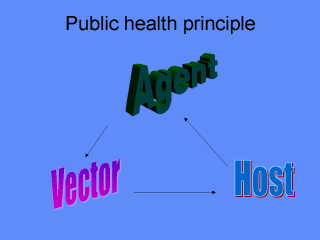| front |1 |2 |3 |4 |5 |6 |7 |8 |9 |10 |11 |12 |13 |14 |15 |16 |17 |18 |19 |20 |21 |review |
 |
It is
important, when thinking about how best to control disease, to consider the relationship
between the disease agent, the vector (the mechanism by which the agent is transmitted to
the host) and the host - usually human. Public health control methods are almost always
based on the simple separation of these three components. Keep the virus from the vector and it can't reach the host. Then it cannot cause disease in the host. This simple but effective approach has maintained the high level of health that we enjoy today. However, in many parts of the world, it is difficult for people to achieve or retain this separation. For example, water borne diseases are a common problem in Hong Kong. Shellfish, such as local oysters are filter feeders and collect or trap particles in the sea water as they feed. Viruses, such as those causing Hepatitis A, and the Norwalk-like viruses, the vibrio bacteria that cause cholera are all found in faecally-contaminated seawater. Recent outbreaks in Hong Kong have been traced to restaurants keeping fish in harbour seawater, and to the consumption of raw oysters. Hong Kong's restaurants are not cheap and oysters are not the food of the poor. So it is not just the poor in developing countries without access to clean drinking water who are at risk, though the absolute numbers of people in these developing countries, coupled with their generally poor nutrition, means that more of them are vulnerable, with potentially more serious consequences for them. |
| front |1 |2 |3 |4 |5 |6 |7 |8 |9 |10 |11 |12 |13 |14 |15 |16 |17 |18 |19 |20 |21 |review |